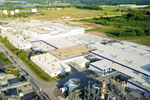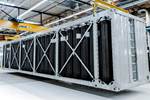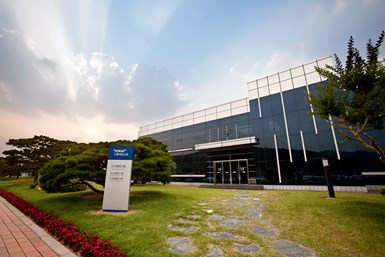Toray to increase carbon fiber tow capacity by more than 20%
Capital investments to Spartanburg, S.C., and Gumi, Korea facilities, in response to market demand, will increase annual capability to 35,000 metrics tons beginning in 2025.
Toray Industries Inc. (Tokyo, Japan) has announced plans to increase regular carbon fiber tow production capacity at two facilities. Capital investments will add lines to Toray Composite Materials America’s Spartanburg, S.C., U.S. plant and the Toray Advanced Materials Korea plant in Gumi. These investments will increase the Toray Group’s annual capacity by more than 20% to 35,000 metric tons beginning in 2025.
Toray reports that these capacity increases are in response to the market situation in the U.S. and Korea, where demand for pressure vessel applications is rising. Fueled by the ongoing clean energy revolution in hydrogen, natural gas and other industrial applications, these expansions target high-strength carbon fibers up to 24,000 filaments per tow. The capacity increase will also complement total supply for other core markets such as aviation.
Toray anticipates demand for regular carbon fiber tow to expand by 17% annually on a decarbonization megatrend. This trend is signaling the growing demand for compressed natural gas (CNG) delivery vehicles and gas transportation tanks, increasing the need for CNG, hydrogen tanks and other pressure vessel applications. This trend will also increase the adoption of this material for passenger cars, trucks, trains and ships that use fuel cells.
Toray has made growing sustainably pivotal to Project AP-G 2025, its medium-term management program. Accordingly, the company has positioned industrial applications of its carbon fiber composite materials business to accelerate measures tackling climate change. Toray will fully leverage its comprehensive capabilities in keeping with its corporate philosophy of contributing to society by creating new value and help materialize a carbon-neutral economy by 2050.
For related reading, see “Toray announces growth, investment in carbon fiber composite materials.”
Related Content
-
Materials & Processes: Composites fibers and resins
Compared to legacy materials like steel, aluminum, iron and titanium, composites are still coming of age, and only just now are being better understood by design and manufacturing engineers. However, composites’ physical properties — combined with unbeatable light weight — make them undeniably attractive.
-
Materials & Processes: Fibers for composites
The structural properties of composite materials are derived primarily from the fiber reinforcement. Fiber types, their manufacture, their uses and the end-market applications in which they find most use are described.
-
Carbon fiber in pressure vessels for hydrogen
The emerging H2 economy drives tank development for aircraft, ships and gas transport.


















